The AYANEO Flip KB is AYANEO's first clamshell device, and it might just be the best way to experience Windows on a handheld.
The AYANEO Flip is AYANEO’s current – at least for now – flagship Windows handheld. Or, to be more precise, it is one of two flagship Windows handhelds since the Flip comes in two different configurations. There is the Flip KB, where KB stands for Keyboard, and there is the Flip DS, where DS stands for Dual-screen.
In this review, we'll look at the KB — and honestly, out of the two options, I feel like the KB is the one I’d recommend to most people. The dual-screen of the Flip DS, to me, feels mostly like a gimmick and is only really practical if all you care about is DS/3DS or Wii U emulation. If you want to learn more about that specific device, there are two reviews by friends of the site RetroGameCorps and ThePhawx.
The AYANEO Flip KB, like its DS sibling, uses an AMD 7840U chip. That is the same chip you can find in nearly every other handheld that’s currently on the market (except for a few Intel based ones like the MSI Claw). If you follow the handheld scene you know this chip by now — there have been many articles on what that specific chip can do. Here is what I wrote in my AYANEO 2s review:
But it can definitely compete in terms of raw power. That's thanks to the AMD 7840U, basically the XL version of the Z1 Extreme found in the ROG Ally. You'll hear this name a lot since it will be what all these other manufacturers, like GPD, AYN, Anbernic and so on, will likely use in their devices. While the 7840U and the Z1 Extreme are similar, the 2s beats the ROG Ally. Setting both devices to 15 watts, the 2s outperforms the Ally on nearly all benchmarks.
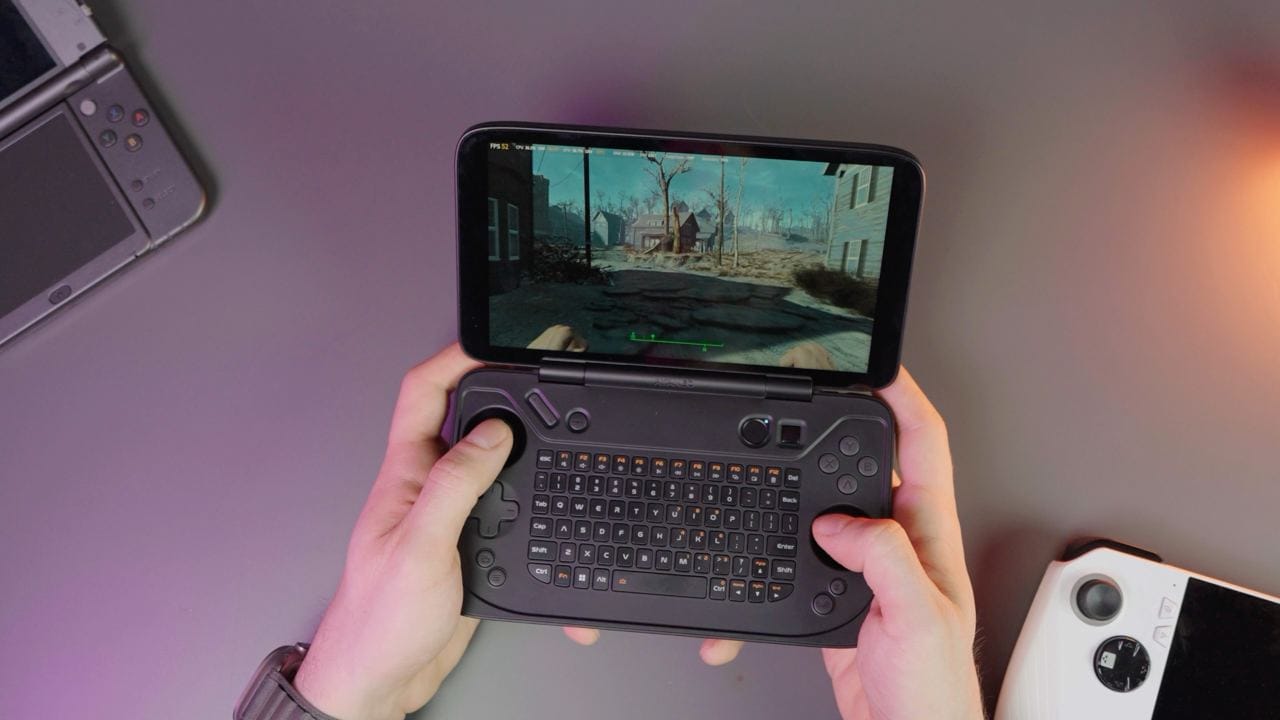
In the Flip, the 7840U doesn’t do anything too surprising. We know by now what this chip is capable of: You can easily play your older triple-A games such asFallout 4 or Witcher 3 at high settings on this 7” 1080p 120hz screen, play nearly every indie game on the market, including the recently released Early Access for Hades II, and even play newer triple-A titles if you’re willing to live with lower graphics and mess with the settings to dial them in.
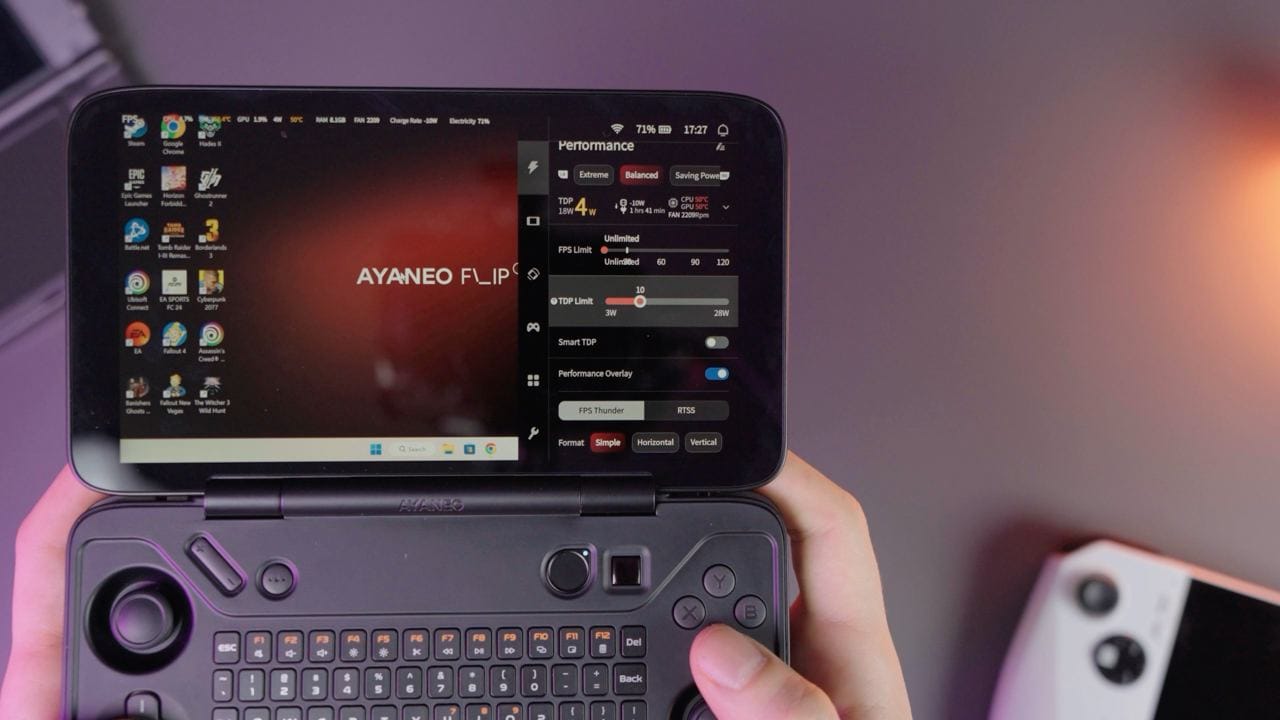
The 7840U in the Flip goes up to 28W, though from my testing the handheld will get annoyingly loud, and empty your battery quickly. To be fair, that high of a TDP is also mostly just meant if you’re playing plugged into a wall outlet, because the battery will barely hold an hour otherwise.
On the other extreme, the chip can go down to 3 watts but as soon as I put the TDP that low, Windows starts to be unresponsive. However, I seem to have this experience with every Windows handheld — and not just this one, so it might just be something with how I configure all of these devices whenever I get them.
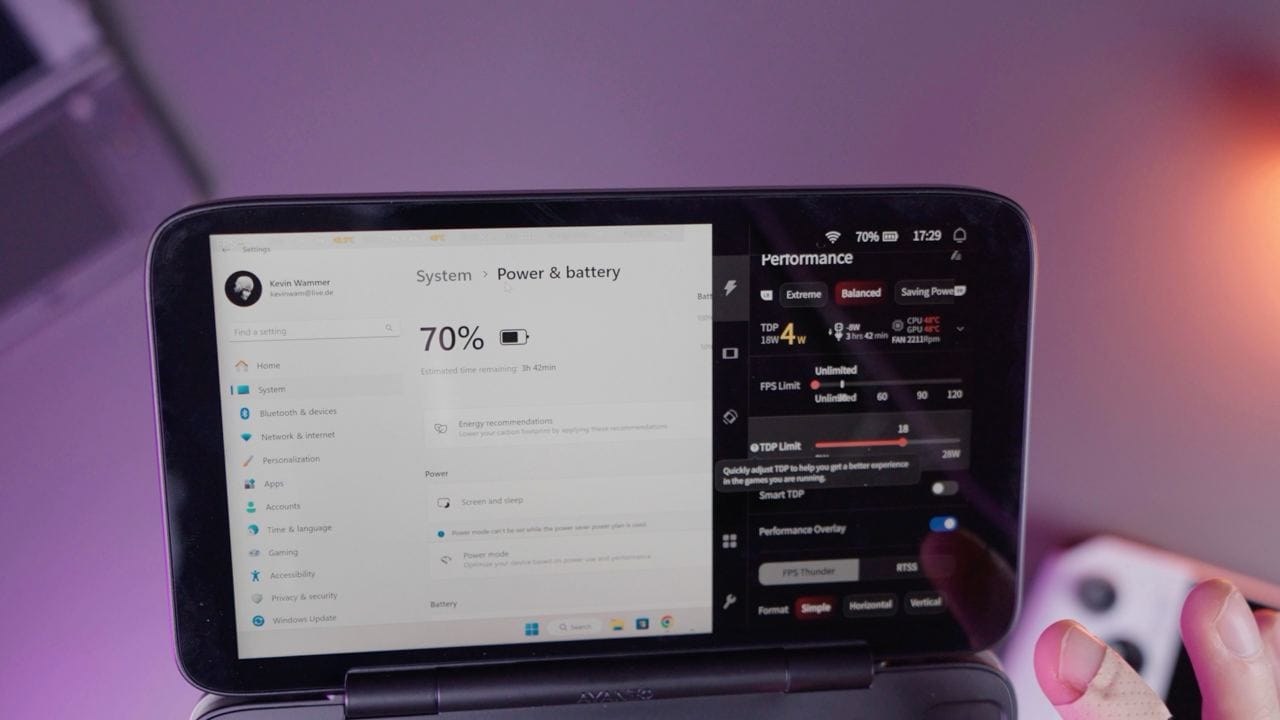
The range you should aim for on the Flip and the 7840 is around 10 to 20W. That way you can play all of your indie games, emulate older platforms, including, yes, the Nintendo Switch, and a lot of older and even new Triple A games. At this range you can expect between 1 to 13 hours of battery life.
AYASpace 2.0 is still my favourite software
To do all this, you have to use AYASpace 2. Here you can change settings like TDP, rumble, navigate your game library if you so desire, install updates, and much much more. AYASpace 2 is, by now, very mature and I think my favourite handheld software currently available for Windows.
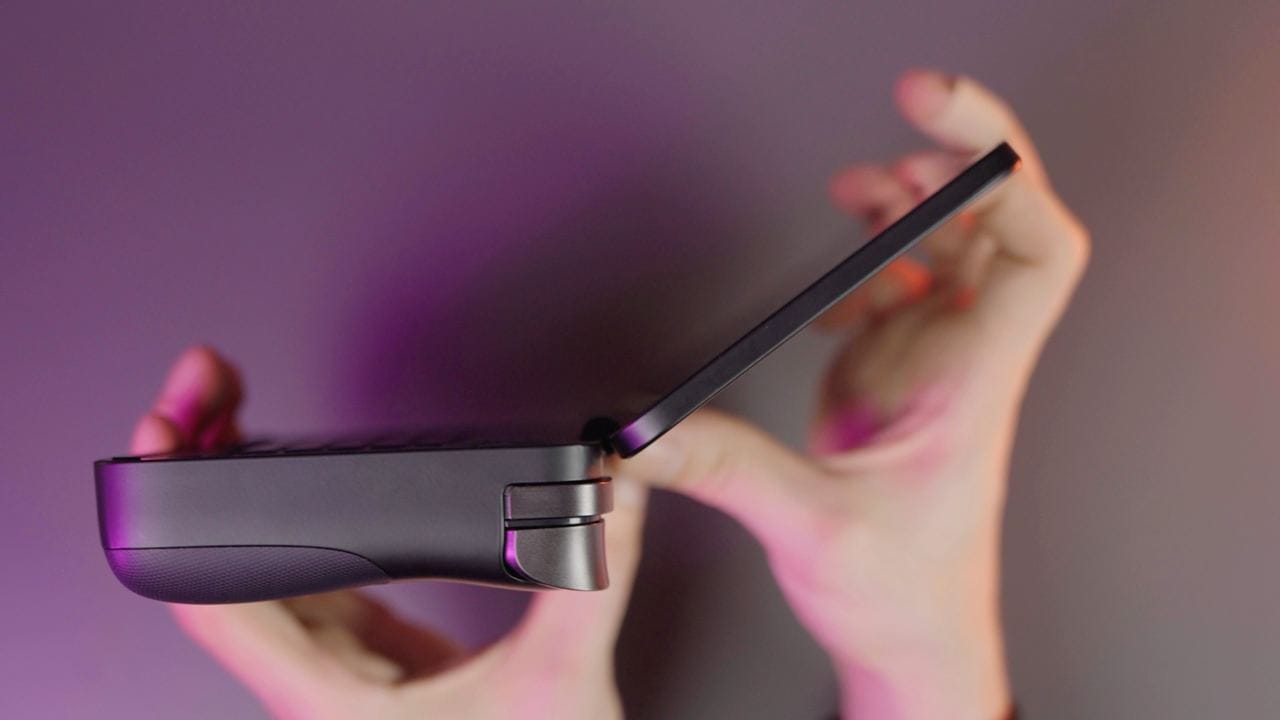
A little side-note though. I play all these handhelds mostly when at home and near a wall outlet. So I set and forget the Flip to 18W watts and call it a day. If out and about, your mileage may vary of course.
But it’s not the chip that is the star of this device. It is its clamshell mode, and especially its keyboard. This is the first handheld device I am testing that comes with a built-in hardware keyboard, and let me put it like this: Where have you been all this time?
The keyboard is the killer feature
Windows on a handheld is not the greatest of experiences. It’s not as straightforward and as polished as something like Steam OS, where the whole experience was clearly designed to be navigated with a controller. But with the addition of an always-available hardware keyboard, Windows is so much better to navigate.
Sure, it’s still your typical Windows Desktop experience, but there have been so many moments where simply having a function row or arrow keys to navigate the OS have saved me from many frustrations.
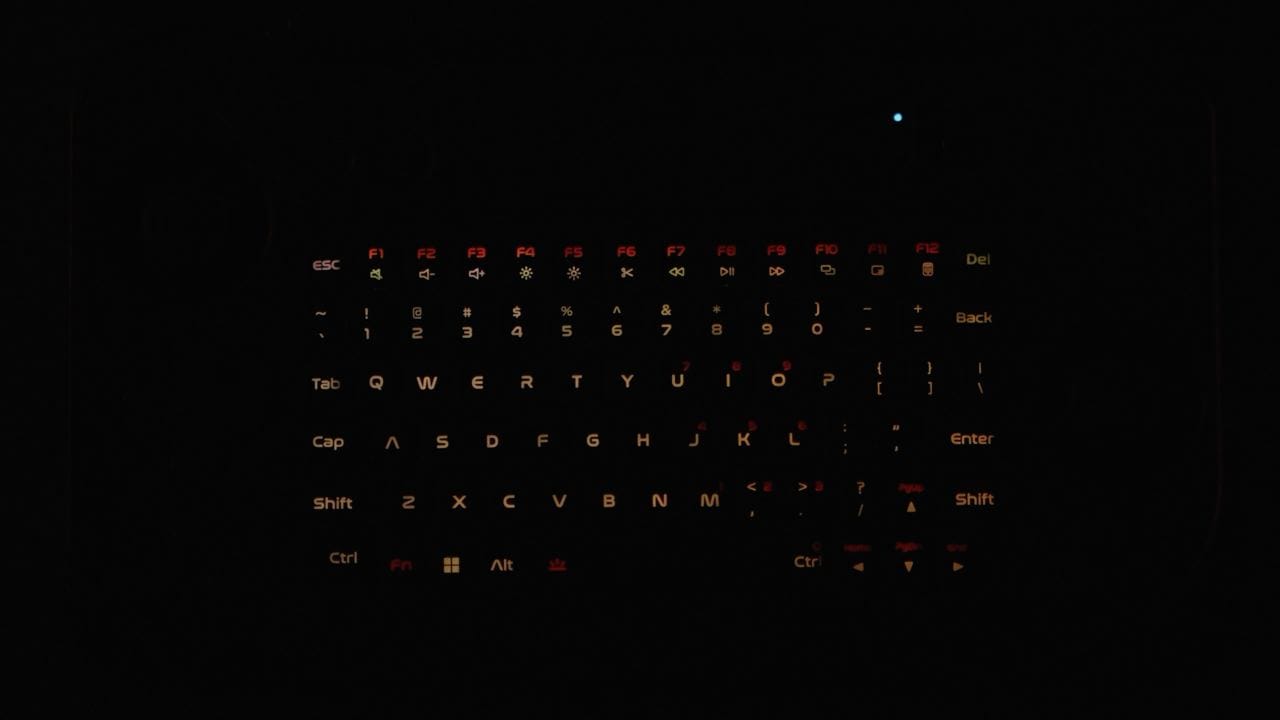
As for the keys themselves, they are decent. Depending on your age, you may have some experience with a Blackberry phone keyboard. This is that, although slightly larger. It also comes with a backlight, though at least in my case, I feel like the light is not very consistent with some buttons more illuminated than others. It’s still usable, but it just looks a little off. Though this seems like it may be an issue with my unit so you may see different.
A thicc boy
Due to its clamshell form factor, and its smallish footprint, AYANEO had to make some design choices that might not be for everyone. It has for example shallower buttons and more recessed analogue sticks than what you may be used to, otherwise the screen wouldn’t be able to close. I don’t really have any problems with the buttons though they are really low profile, and you may just need a little getting used to, but the analogue sticks are — depending on the game you play — maybe a tad too recessed.
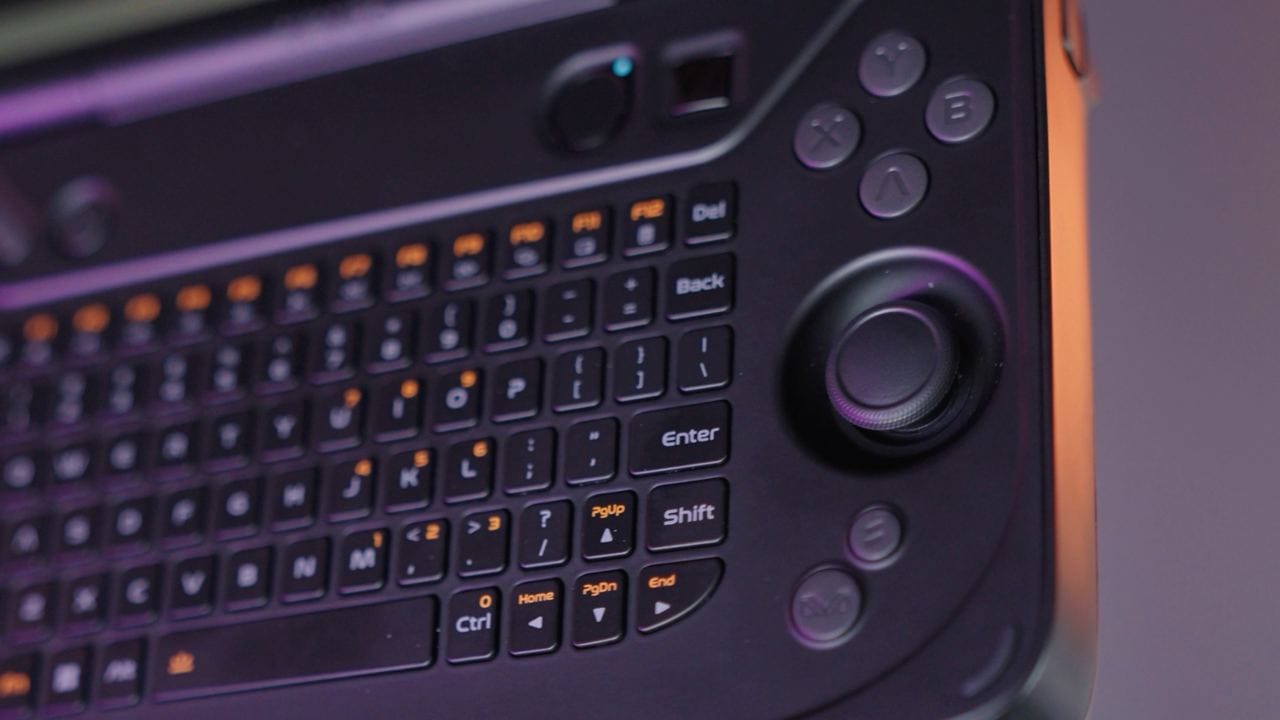
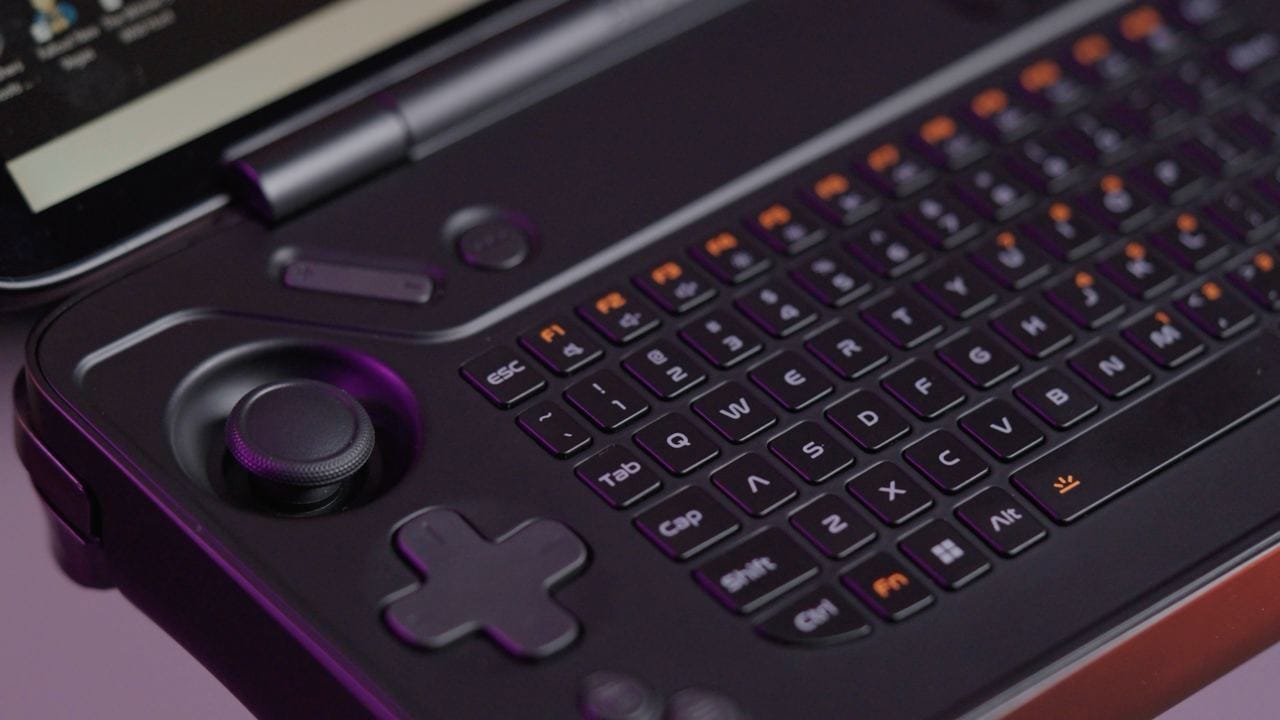
If you have to quickly move your fingers from the A-button to the right stick, you may at times just not hit it. I wonder if there would have been an option where you can pop the sticks out a little, and before you close the lid, pop them back in. But hey, at least these are hall-sensing analogue sticks, so you shouldn’t suffer from drift.
While we’re talking buttons, the Flip has a fingerprint/power button, and a little nub that emulates mouse navigation like those old Thinkpad laptops — I’m really aging myself in this article. I heard from some people reviewing the Flip that they still prefer navigating Windows with an analogue stick, but I actually don’t. This nub is much more precise, and you can click it like a button for a left mouse-click.
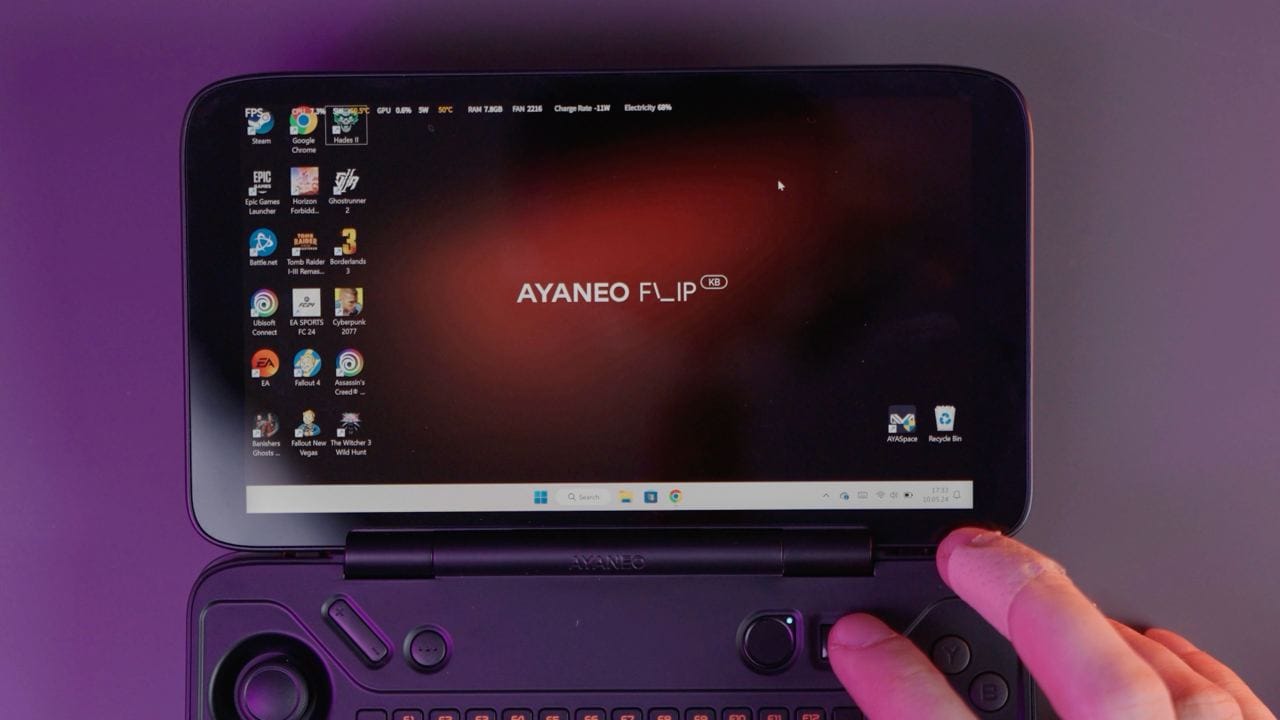
Like Nintendo's 3DS, the Flip has three fixed positions for the screen when open, though at very different angles. There's a right-angled position, another at 135ish degrees, and flat. The angles on the 3DS are in comparison all very close to each other.
I have to say, AYANEO nailed the positions. I haven’t once felt like it was missing another angle, and definitely prefer having fewer options in return for a much sturdier hinge. This is after all one of the parts that break on most of these clamshell devices.
The AYANEO has, in theory, a smaller footprint than most handhelds. However, it is one chonky boy — and I mean it. It’s thicccc with four c’s. Check the image below, to compare it to a Steam Deck or a ROG Ally. It also comes in at 656 grams.

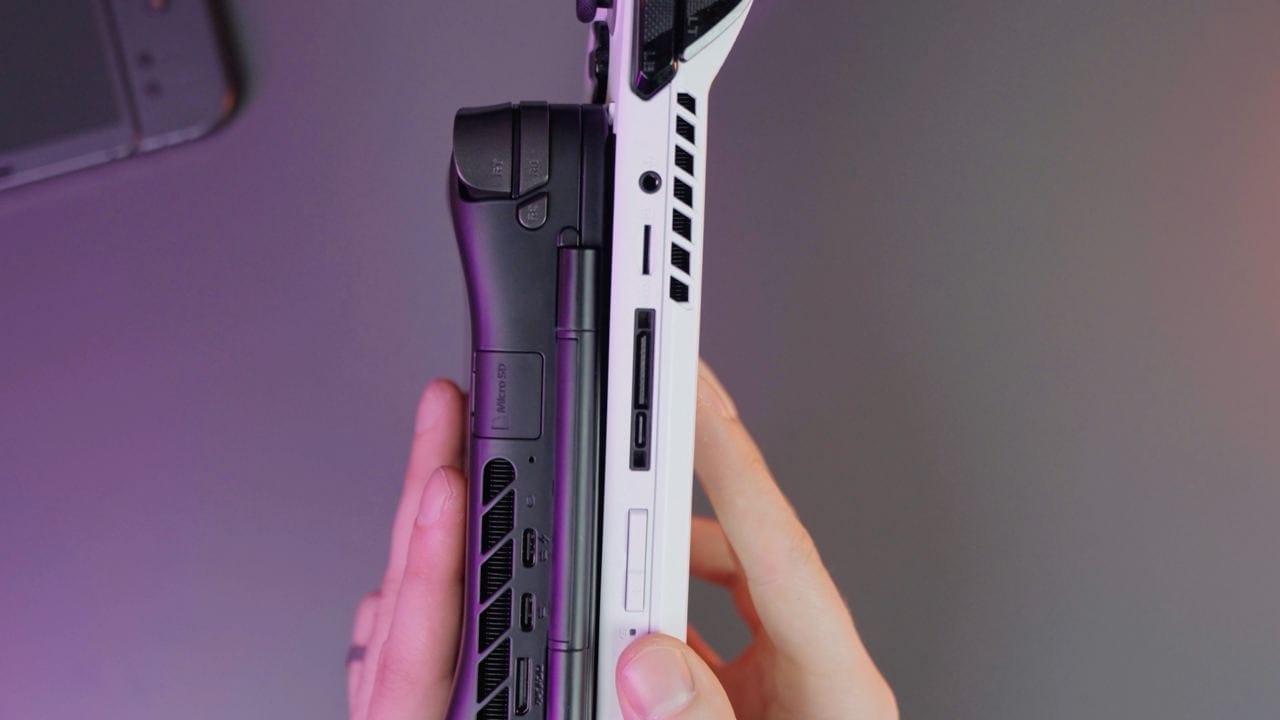
Breaking down the Flip KB's specs
But thanks to that chunkiness, AYANEO is able to fit in up to 2TB of internal storage, up to 64 GB of memory, a 45Wh battery, and a fan mechanism that should in theory help cool the 7840U. In my testing, the only part that really gets warm is the upper left part where you can find the fan exhaust, though it doesn’t get too hot. Of course, at higher wattages, it still gets very loud, but at least it never burns your hand, so I guess we can count that as a win?
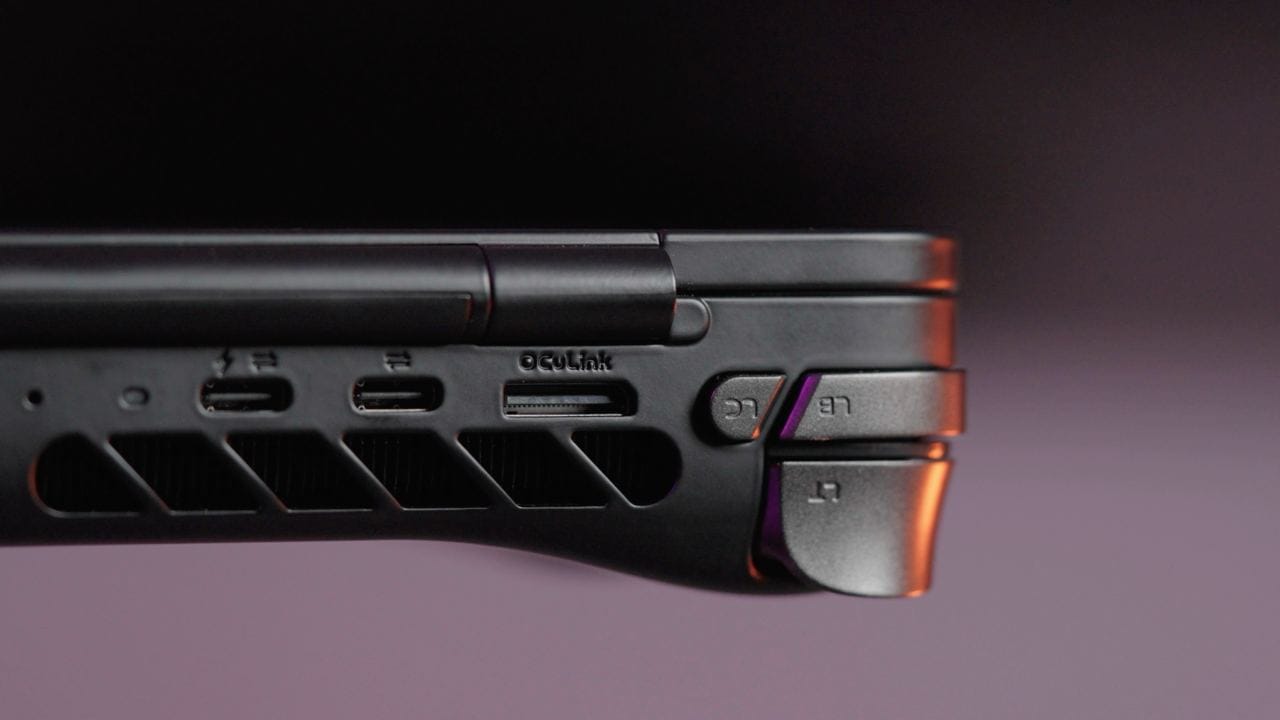
One thing I find annoying is that the Flip has no USB-C port on the bottom of the device. It has two ports, one USB4 and one USB 3.2, but both are found on the top of the device. Also, only one is for data and power, while the other port is only for data. It naturally also has a micro-SD card slot, and it has an OcuLink port. What you normally do with an OcuLink is connect an external GPU enclosure, and thanks to its high speeds, it is nearly as good an experience as directly connecting it to a motherboard.
Unfortunately, I don’t own an OcuLink compatible eGPU, but I have the Razer Chroma X with a 3070 inside. I’m working on a post where I pair these two, so sign up for our free newsletter to know when that post goes live.
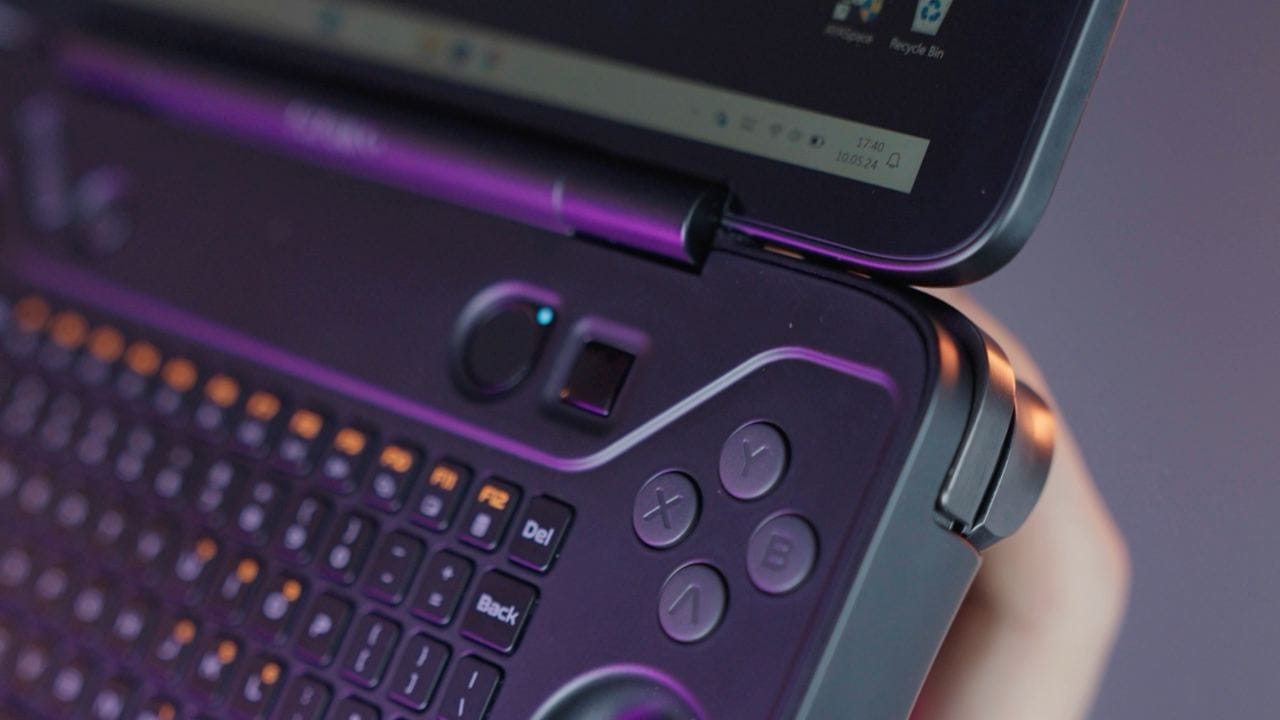
At a starting price of $699 for 16GB of memory and 512 GB of storage, up to $1200 for 64GB of memory and 2TB of storage, it is definitely more expensive than the likes of an ROG Ally or Steam Deck. But what that gets you is a more powerful device, with a great screen and a very different form factor. There is even an option for an 8840U chip, but so far that chip doesn’t feel like that significant of an upgrade compared to the 7840U most people are familiar with. Also, there is the aforementioned, more expensive dual-screen version.
Not perfect, but still pretty great
The Flip KB is not a perfect device. The analogue sticks and its overall chunkiness may be a problem for some, the used black plastic material is something of a fingerprint and smudge magnet, and I really miss the bottom USB-C port.
But I now understand why so many handheld aficionados like these clamshell devices. Having access to a keyboard, and a form factor that doesn’t take up too much space in a backpack is something I didn’t know I would like that much, and it keeps things protected too of course. I mean it when I say that a hardware keyboard on a Windows handheld is, in my eyes, a game changer.
For AYANEO’s first foray in this form factor, I feel like they did a damn good job. There are some trade offs here and there that come with clamshell designs, but by far and large, this is a really good handheld.
You can get the AYANEO Flip KB over on Indiegogo.



